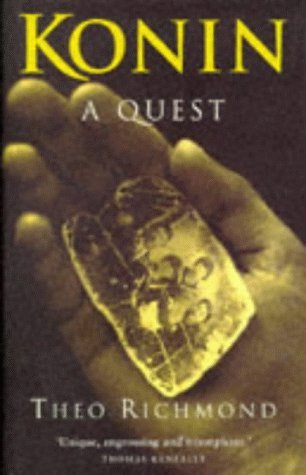
The Hare With Amber Eyes: A Family's Century of Art and Loss
Book Description
A tiny hare made of ivory holds the weight of a family's extraordinary journey through art, culture, and loss. As the story unfolds across generations, the delicate balance of their exquisite collection is threatened by sweeping historical tides and personal betrayals. Each treasured piece reveals secrets that illuminate a legacy of resilience amidst devastating upheaval. From the opulence of pre-war Vienna to the shadows of post-war Europe, the stakes rise higher with every turn of the page. What happens when art is all that remains of love, identity, and history? Can it survive the relentless march of time?
Quick Book Summary
The Hare with Amber Eyes is an evocative family memoir by Edmund de Waal, tracing the journey of his Jewish relatives and their extraordinary collection of Japanese netsuke—miniature sculptures, including a tiny hare made of ivory. The narrative weaves together art, history, and memory, as de Waal unravels the fate of both the netsuke and his ancestors, the Ephrussi family, who rose to opulence in 19th century Europe before losing everything to the rise of Nazism. Moving from the salons of Paris and Vienna to modern-day Tokyo and London, de Waal meditates on the meaning of possession, loss, and resilience, exploring how objects can bear witness to personal and collective histories.
Summary of Key Ideas
Table of Contents
The Journey of the Netsuke Collection
The story begins with Edmund de Waal, a renowned ceramicist, receiving a collection of 264 Japanese netsuke—small, intricately carved ivory and boxwood figures, including the eponymous hare—from a great-uncle in Tokyo. Compelled by their beauty and mystery, de Waal embarks on an investigation to uncover their provenance, leading him into the broader story of his family, the cosmopolitan Ephrussi dynasty. This journey becomes not only a history of objects, but a rediscovery of heritage long obscured by time and trauma.
Family Legacy and Identity
The Ephrussi family emerged as a powerful banking dynasty in 19th-century Europe, with grand residences in Odessa, Paris, and Vienna. As de Waal retraces their footsteps, he reveals the remarkable lives of his ancestors—art collectors, patrons, and intellectuals whose fortunes mirror the ambitions and anxieties of their age. The netsuke enter the family as a wedding gift in Paris, circulating through salons filled with luminaries of the Belle Époque. These objects become silent witnesses to the family’s ascent and the flourishing of European culture.
Art as Witness to History
The eruption of two World Wars and the rise of Nazi antisemitism brings catastrophic upheaval. The family’s Vienna palace is seized, artworks are looted, and relatives are forced into exile or worse. Amidst the devastation, it is a loyal servant who hides the netsuke behind books in a modest room, saving them from Nazi theft. De Waal movingly recounts the personal costs of persecution—loss of status, displacement, and the fragmentation of family—while tracing the path of the collection as a tenuous thread connecting past and present.
The Impact of War and Loss
De Waal explores how art objects, like the netsuke, become vessels of memory. Through their survival, these miniature carvings serve as tangible links to a lost world, preserving stories and traditions threatened by violence and erasure. This motif prompts reflection on the nature of collecting and inheritance, raising questions about what is truly valued and what endures across generations. The netsuke, physically unchanged yet saturated with history, embody both fragility and resilience.
Memory, Survival, and Resilience
In the present, de Waal reclaims the family’s narrative by meticulously reconstructing their experiences and honoring their endurance. The netsuke, once symbols of luxury and culture, transform into emblems of survival and continuity. Ultimately, the memoir affirms the persistence of identity, love, and artistry despite unimaginable loss. De Waal’s meditation on the fate of his family and their art imparts a universal message about confronting the past, cherishing remembrance, and the power of objects to hold meaning through time.
Download This Summary
Get a free PDF of this summary instantly — no email required.





